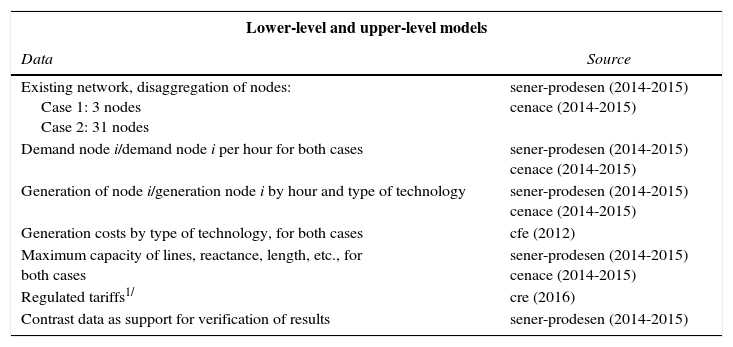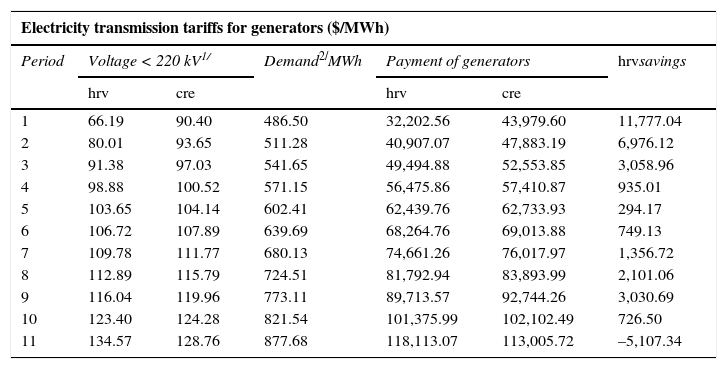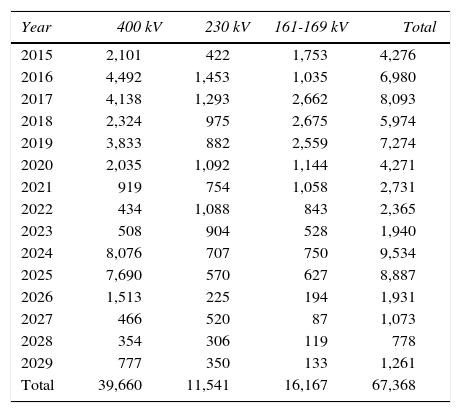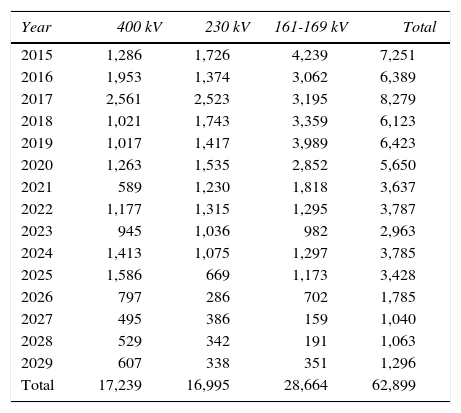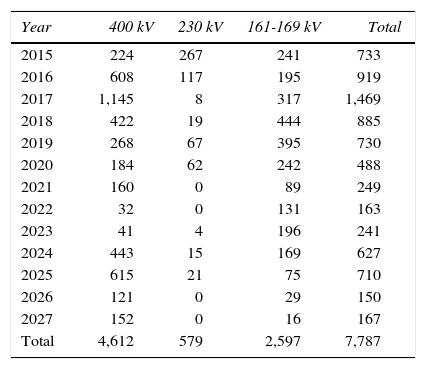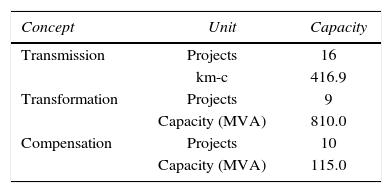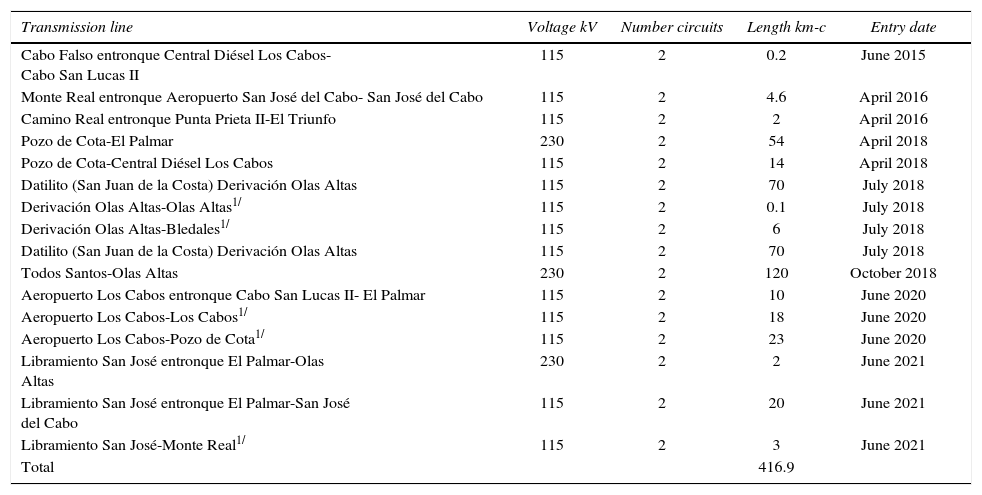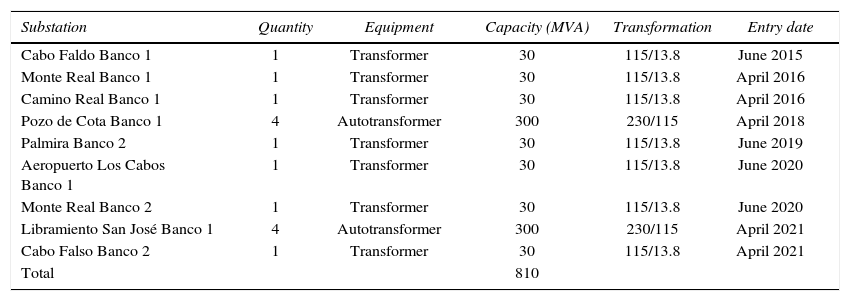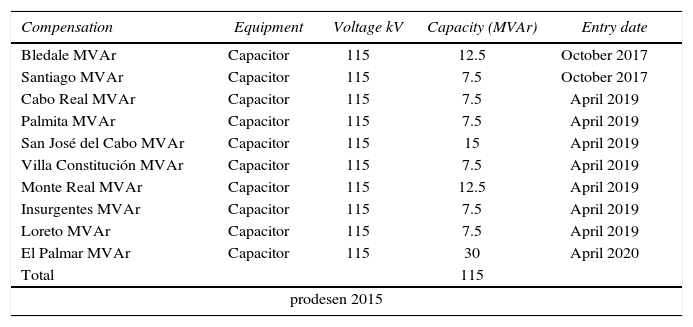The tariff imposed over the use of electricity transmission networks is one critical factor to achieve efficiency in electricity markets. In Mexico, the current transmission network tariffs are based on long run marginal costs. We propose an incentive pricecap mechanism and apply it to the meshed network system in the isolated electricity system of Southern Baja California, Mexico. We further compare the current transmission tariffs set by the Mexican regulator (cre) with the tariffs resulting from our regulatory scheme. We show that our mechanism prices the network at tariffs rendering superior welfare compared to the tariffs determined by Mexican authorities.
La tarifa impuesta sobre el uso de la red de transmisión eléctrica es un factor crítico para lograr la eficiencia en los mercados de electricidad. En México, las tarifas vigentes se basan en costos marginales de largo plazo. Proponemos un mecanismo de precios máximos que generen incentivos a la inversión y lo aplicamos al sistema eléctrico aislado de Baja California Sur. Además, comparamos las tarifas actuales de transmisión establecidas por el regulador mexicano (cre) con las tarifas resultantes de nuestro esquema regulatorio. Demostramos que nuestro mecanismo de precios proporciona un bienestar superior en comparación con las tarifas determinadas por la autoridad mexicana en la red de transmisión eléctrica.
We are grateful for the much valuable help on data recollection by the Centro Nacional de Control de Energía (cenace) and the Subsecretaría de Electricidad at the Secretaría de Energía (sener). We also thank Roberto Carlos Ordóñez for very able research assistantship. Juan Rosellón further acknowledges support from project no. 232743 from the sener-Consejo Nacional de Ciencia y Tecnología-Fondo de Sustentabilidad Energética, the Center for Energy Studies at Rice University, and the USC Price School.
See Hogan (2002) and Hunt (2002).
Clean energy technologies in Mexico include hydro and nuclear generation, as well as renewable energy sources (solar, wind, geothermal and biomass).
76% of generation capacity for public service corresponds to plants owned by cfe, and the remaining 24% plants are owned by Independent Power Producers (ipp's).
Regions Ixtepec (40), Güémez (21) and Loreto (53) were incorporated into the national electricity system in 2015.
The ies has been meshed in the voltage level of 400kV in the center, east, northeast and west of the country. In the north, northwest and peninsular areas, the ies is in stage of strengthening, with transmission networks in some isolated links evolving from 230kV to 400kV (see sener, 2015).
Appendix 2 presents the corresponding transmission expansion data for Southern Baja California.
OMA considers both historical and projected operating costs reported by cfe.
An annual 1% X-efficiency factor was determined for 2017 and 2018.
Based on the exchange rate to settle liabilities denominated in dollars USA, payable in Mexico published in the Official Gazette, by Banco de México.
See Hogan, Rosellón and Vogelsang (2010), Section 6.2.3.
The original choice variables in the hrv model are incremental financial transmission rights, ftrs, (variable part) and the fixed part of the transmission two-part tariff (Hogan, Rosellón and Vogelsang, 2010, Section 6.2.1). For implementation purposes, this original reformulation can be reduced in terms of the congestion rent collected by the iso, given market clearing prices (ftrs stand for financial transmission rights, a financial instrument used in electricity markets to hedge consumers from nodal-price instruments. ftrs are also important to grant property rights in the expansion of transmission networks (see Joskow and Tirole, 2000; Kristiansen and Rosellón, 2006, 2010). ftrs can also have important redistributive effects in recently created markets (see Kunz, Neuhoff and Rosellón, 2016).
The following simulations assume uniform congestion levels across transmission lines.
Mathematical Programming with Equilibrium Constraints (mpec) is a mathematical technique related to the Stackelberg games used to study constrained optimization problems subject to various types of constraints (e.g., variational inequalities or complementarities). The General Algebraic Modeling System (gams) is a modeling system for mathematical optimization that solves linear, nonlinear, and mixed-integer optimization problems.
The linear demand function is a standard assumption in the applied literature of incentive regulation for electricity transmission. See for instance, Rosellón and Weigt (2011).
Investment is shown in percentage relative to the initial capacity in the starting lines.
Este es un tema crucial que está dando lugar a resultados sorprendentes, como se informó hace unos días en La Jolla Energy Conference patrocinada por el UC San Diego Institute of the Americas: “there is no technical impediment to California getting all of its energy from renewables —now. In simple terms, this means all power could come from sources like wind, solar and hydro without reliance on fossil fuels. This has been the position of environmental groups and renewable energy companies. But not utilities, which typically argue that the grid still requires fossil electricity for stability, because renewables come and go”. Véase: “Sempra VP surprises, says 100 percent renewable grid is possible now”, de Ingrid Lobet, inewsource.org, 26 de mayo de 2017 (las cursivas son nuestras).
De acuerdo a la Memoria de cálculo usada para determinar la tarifa que aplicará la cfe por el servicio público de transmisión de energía eléctrica durante el periodo tarifario inicial, que comprende del 1 de enero de 2016 y hasta el 31 de diciembre de 2018. Fue publicada en noviembre de 2015, y señala que las tarifas de transmisión son las mismas para todo el país:
• Para los generadores: para una tensión > 220kV es de 0.0499 pesos/kWh y para una tensión < 220kV es de 0.0904.
• Para los consumidores: para una tensión > 220kV es de 0.0625 pesos/kWh y para una tensión < 220kV es de 0.1424.
Cabe hacer notar que el modelo utilizado para la obtención de los precios nodales no es el mismo que se utiliza en el artículo que se comenta. No obstante, no se puede asumir sin argumentación previa que los precios nodales de la región aislada de Baja California, tienen el mismo comportamiento que los del sistema nacional de transmisión. Asimismo, las demandas de energía eléctrica están en función de la actividad económica de sus sectores, misma que tampoco se compara con la actividad económica del resto del país.
Esta sección se basa en Hesamzadeh et al. (2017).



















